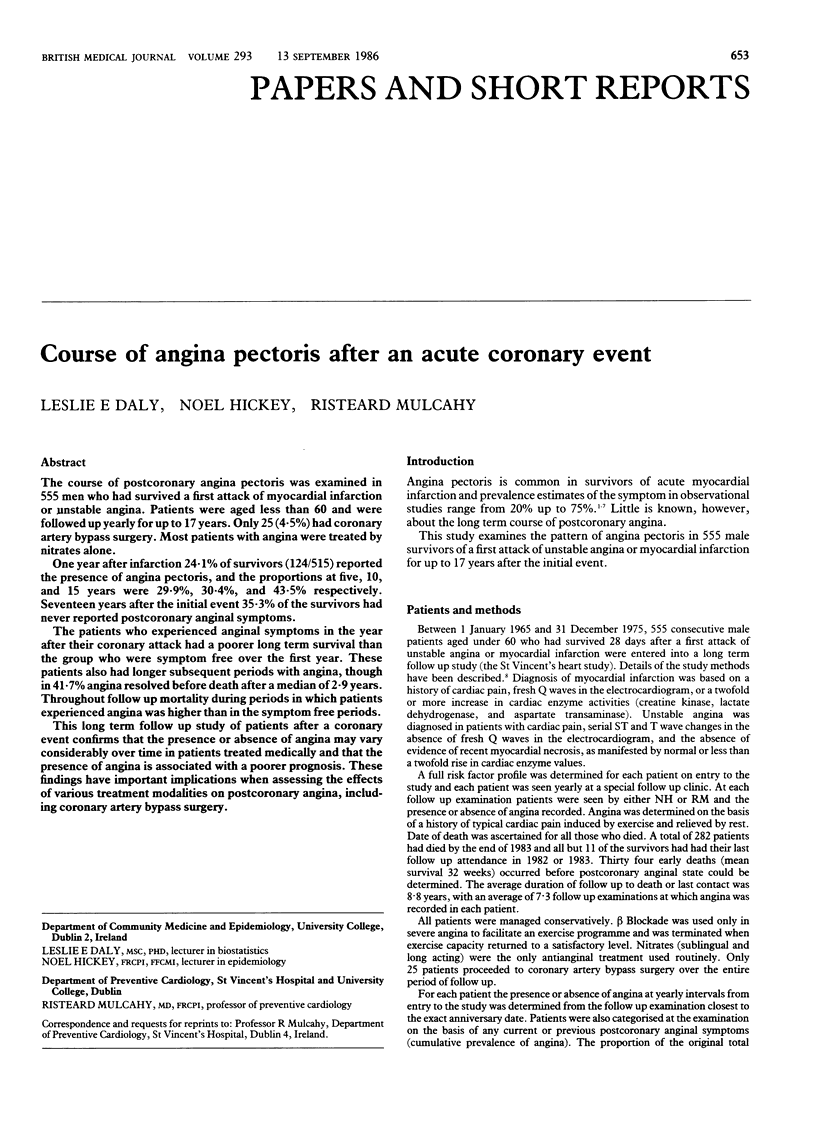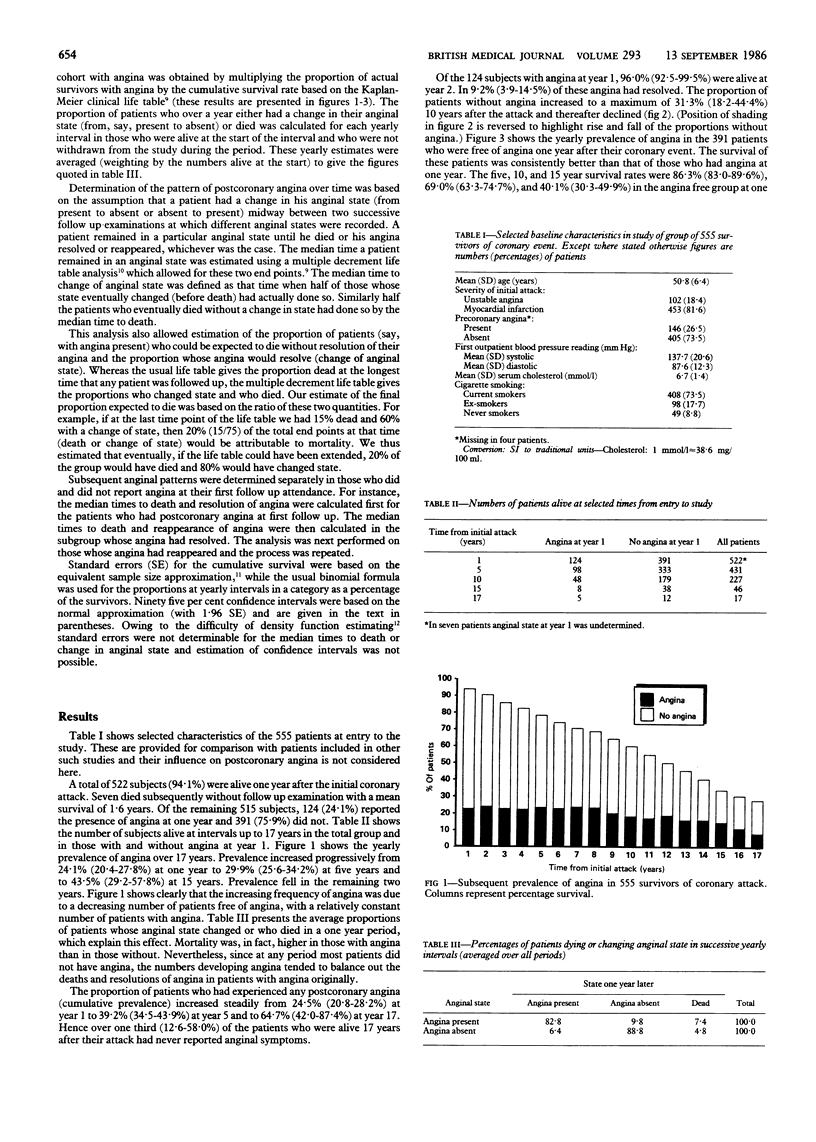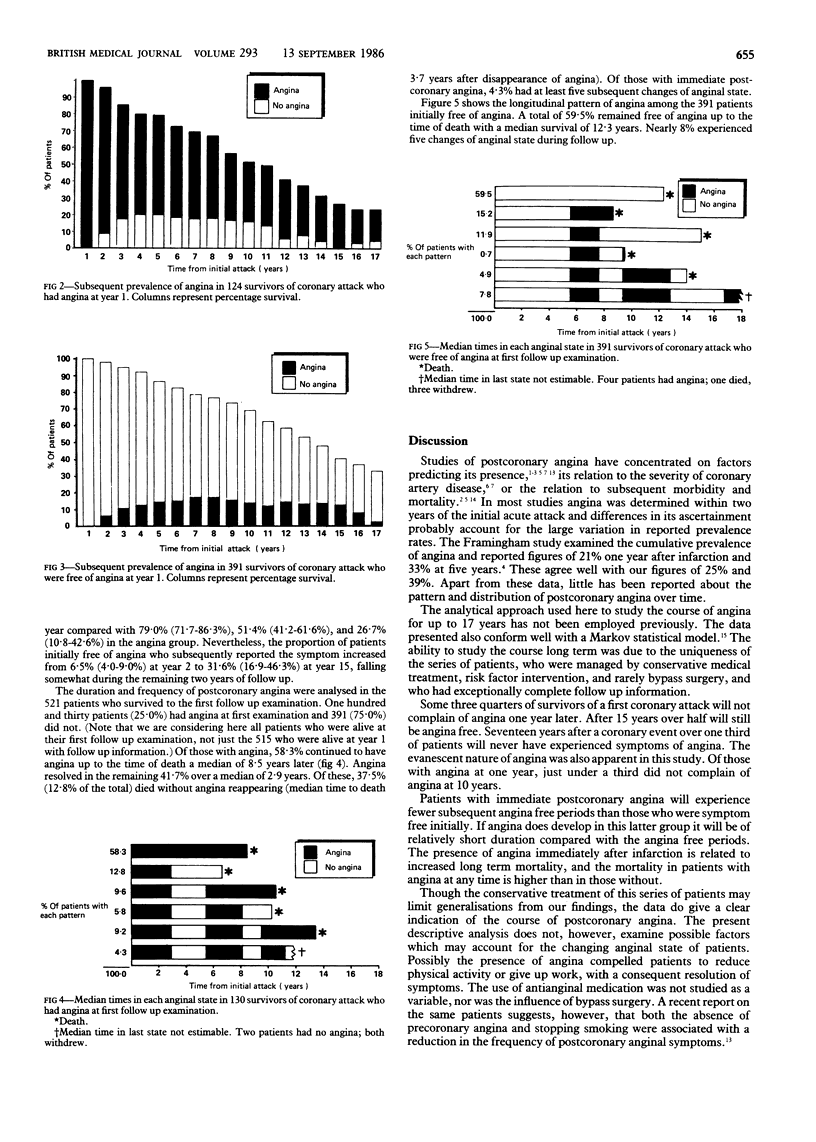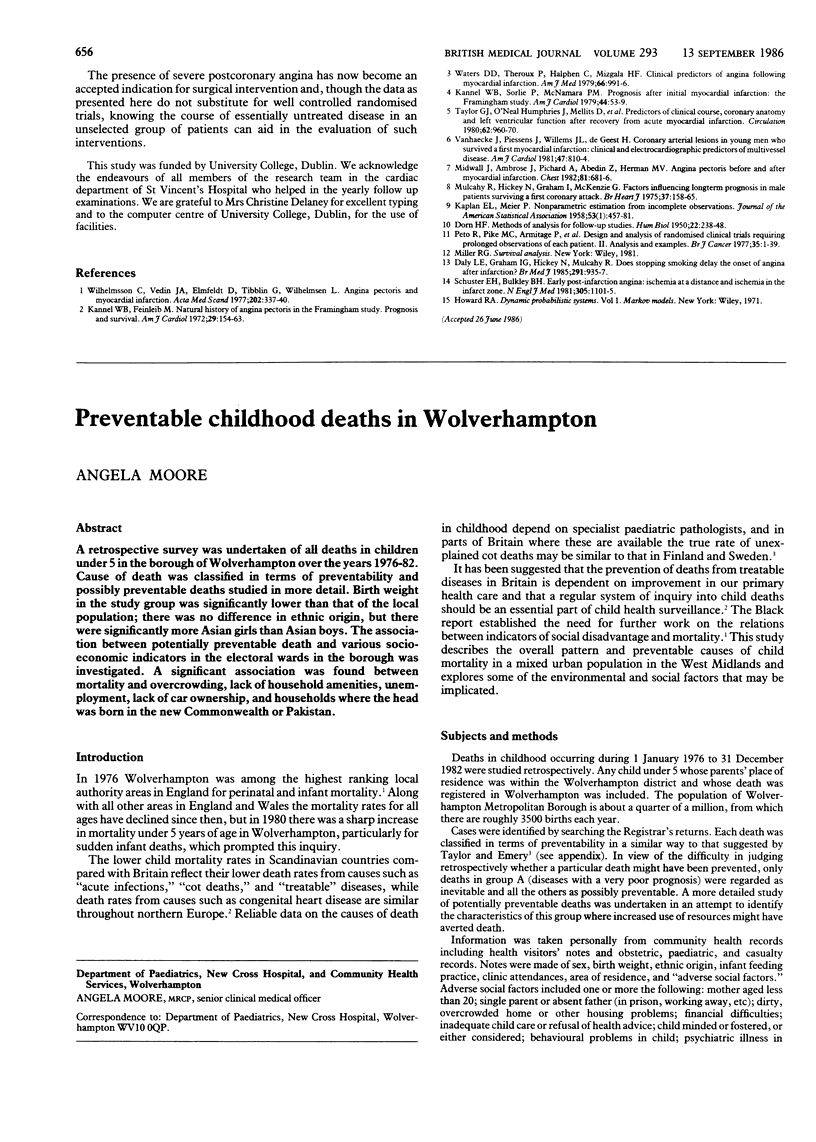Abstract
The course of postcoronary angina pectoris was examined in 555 men who had survived a first attack of myocardial infarction or unstable angina. Patients were aged less than 60 and were followed up yearly for up to 17 years. Only 25 (4.5%) had coronary artery bypass surgery. Most patients with angina were treated by nitrates alone. One year after infarction 24.1% of survivors (124/515) reported the presence of angina pectoris, and the proportions at five, 10, and 15 years were 29.9%, 30.4%, and 43.5% respectively. Seventeen years after the initial event 35.3% of the survivors had never reported postcoronary anginal symptoms. The patients who experienced anginal symptoms in the year after their coronary attack had a poorer long term survival than the group who were symptom free over the first year. These patients also had longer subsequent periods with angina, though in 41.7% angina resolved before death after a median of 2.9 years. Throughout follow up mortality during periods in which patients experienced angina was higher than in the symptom free periods. This long term follow up study of patients after a coronary event confirms that the presence or absence of angina may vary considerably over time in patients treated medically and that the presence of angina is associated with a poorer prognosis. These findings have important implications when assessing the effects of various treatment modalities on postcoronary angina, including coronary artery bypass surgery.
Full text
PDF



Selected References
These references are in PubMed. This may not be the complete list of references from this article.
- Daly L. E., Graham I. M., Hickey N., Mulcahy R. Does stopping smoking delay onset of angina after infarction? Br Med J (Clin Res Ed) 1985 Oct 5;291(6500):935–937. doi: 10.1136/bmj.291.6500.935. [DOI] [PMC free article] [PubMed] [Google Scholar]
- Kannel W. B., Sorlie P., McNamara P. M. Prognosis after initial myocardial infarction: the Framingham study. Am J Cardiol. 1979 Jul;44(1):53–59. doi: 10.1016/0002-9149(79)90250-9. [DOI] [PubMed] [Google Scholar]
- Peto R., Pike M. C., Armitage P., Breslow N. E., Cox D. R., Howard S. V., Mantel N., McPherson K., Peto J., Smith P. G. Design and analysis of randomized clinical trials requiring prolonged observation of each patient. II. analysis and examples. Br J Cancer. 1977 Jan;35(1):1–39. doi: 10.1038/bjc.1977.1. [DOI] [PMC free article] [PubMed] [Google Scholar]
- Schuster E. H., Bulkley B. H. Early post-infarction angina. Ischemia at a distance and ischemia in the infarct zone. N Engl J Med. 1981 Nov 5;305(19):1101–1105. doi: 10.1056/NEJM198111053051901. [DOI] [PubMed] [Google Scholar]
- Vanhaecke J., Piessens J., Willems J. L., De Geest H. Coronary arterial lesions in young men who survived a first myocardial infarction: clinical and electrocardiographic predictors of multivessel disease. Am J Cardiol. 1981 Apr;47(4):810–814. doi: 10.1016/0002-9149(81)90178-8. [DOI] [PubMed] [Google Scholar]
- Waters D. D., Theroux P., Halphen C., Mizgala H. F. Clinical predictors of angina following myocardial infarction. Am J Med. 1979 Jun;66(6):991–996. doi: 10.1016/0002-9343(79)90455-8. [DOI] [PubMed] [Google Scholar]


